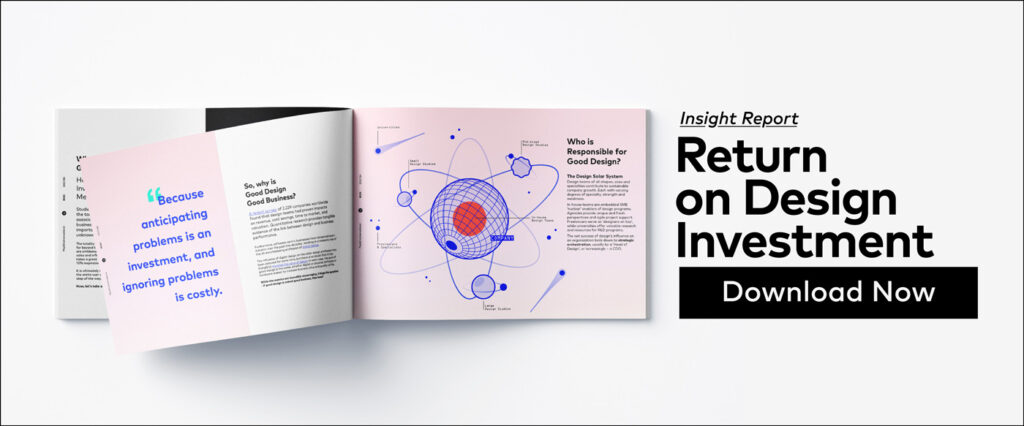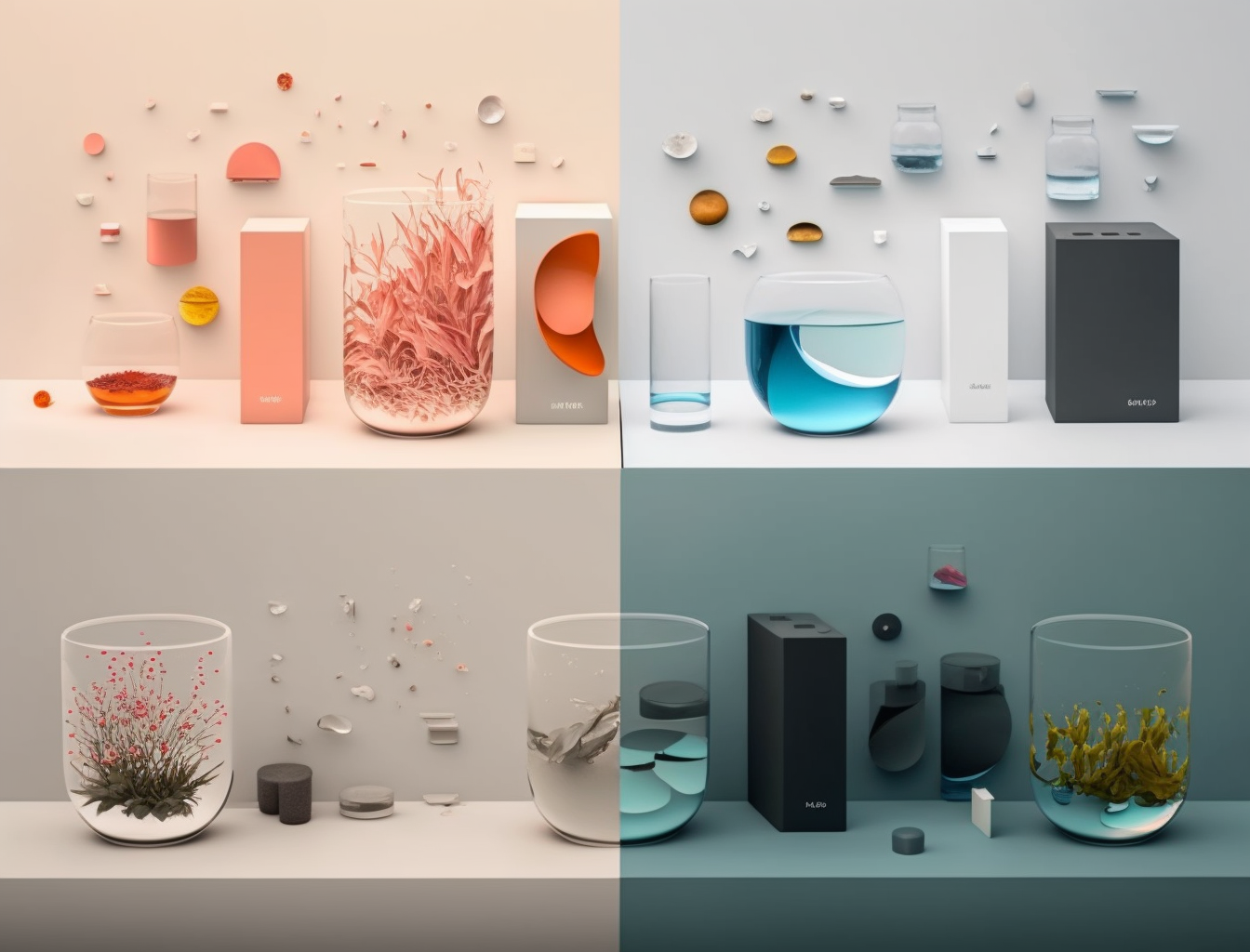With the rise of AI platforms including Chat GPT and Midjourney, among many others, it’s only natural for industrial designers and engineers to wonder how this sophisticated technology will affect the field of product design. Turns out, there may be more to be excited for than to be fearful of.
Artificial Intelligence (AI) has been a hot topic so far in 2023 and is starting to play a critical role in many industries, including the field of industrial design. While some industrial designers may feel intimidated by the integration of AI, the truth is that it can actually be a valuable tool for them. AI can assist industrial designers in various aspects of the design process, such as amplifying the breadth and depth of envisioning new product design ideas, conducting audience research, trend forecasting, and more. Here, we’ll explore the various ways in which AI is contributing to the field of industrial design and how designers can use it to their advantage — rather than be fearful of it.
Envisioning New Product Design Ideas
One of the most exciting applications of AI in industrial design is its ability to help designers envision new product design ideas. AI algorithms can analyze vast amounts of data on consumer preferences, market trends, and product sales to generate new and innovative ideas for product design. This can save designers time and effort by providing them with a starting point for their designs. Moreover, AI can also suggest modifications and improvements to existing product designs, which can result in more efficient and effective designs.
It is important to note that AI is not intended to replace the creative process of industrial designers, but rather to enhance it. AI algorithms can provide designers with new and unique ideas to consider, but it is ultimately up to the designer to bring these ideas to life. In this sense, AI acts as a tool that can inspire and support the designer, not as a replacement. Ultimately, the utopian scenario is a world where AI serves industrial designers and allows them to focus further upstream on the “magic” and strategic thinking part of the craft, which can sometimes get lost or neglected when it comes to production work and unanticipated events in project timelines.
Audience Research
Another important way in which AI is contributing to the field of industrial design is by conducting audience research. AI algorithms can analyze vast amounts of data on consumer preferences and habits to provide insights into what customers want in a product. This data can then be used to inform the design process, ensuring that the end product is more likely to meet the needs and preferences of the target audience. AI can also be used to analyze customer feedback and reviews, providing valuable insights into what customers like and dislike about a product, which can help improve product briefs and decision making in the future.
By incorporating AI into their research process, industrial designers can make data-driven decisions that are more likely to result in successful products. This can help designers make informed decisions about the design, materials, and features of a product, increasing the chances of success in the market. Furthermore, by using AI to analyze customer feedback, designers can identify common themes and patterns in customer opinions, which can be used to make improvements to existing products and inform the design of future products.
Data can be an incredible tool for designers, but it can also smother the design process without proper utilization. Data can help designers identify insights based on past product performance and user reviews, but there is a risk of focusing too much on ‘fixing’ previous mistakes rather than looking toward the future. This famous quote from the late Steve Jobs comes to mind:
“Some people say, "Give the customers what they want." But that's not my approach. Our job is to figure out what they're going to want before they do. I think Henry Ford once said, "If I'd asked customers what they wanted, they would have told me, 'A faster horse!'" People don't know what they want until you show it to them. That's why I never rely on market research. Our task is to read things that are not yet on the page.”
The real question is - can AI analyze data and combine it with a human-like intuition to identify the next disruptive product opportunity?
Trend Forecasting
In addition to helping designers envision new ideas quickly and conducting audience research, AI can also play a crucial role in trend forecasting. AI algorithms can analyze data on past sales, consumer preferences, and market trends to predict future trends in the industry. This information can be used to guide the design process, ensuring that products are designed to meet the needs and preferences of consumers in the future. Furthermore, AI can also help designers stay ahead of the curve by predicting new trends before they become widely known, giving them a competitive advantage in the market.
By incorporating the potential that AI tools have or will have into their trend forecasting process, industrial designers can stay ahead of the curve and create products that meet the needs and preferences of consumers before they even know what they want. This can result in a competitive advantage for the designer and their company, as they are able to bring new and innovative products to market before their competitors. Additionally, by using AI to analyze market trends, designers can make informed decisions about the design and features of their products, increasing the chances of success in the market.
Will the next big market trend be developed by AI, identified faster using AI, or will it be in spite of AI?
Design Process Efficiency and Accuracy
Finally, AI can contribute to the field of industrial design by improving efficiency and accuracy in the design process. AI algorithms can automate repetitive tasks, freeing up time for designers to focus on more creative and important tasks. For example, AI can be used to generate quick product renderings, allowing designers to see how a product will look and function without the need for manual labor early in the design process. This can save time and effort when running through ideas quickly — similar to napkin sketching.
In addition, AI can also improve accuracy in simulation exercises. For example, AI algorithms can be used to conduct simulations and stress tests on product prototypes, allowing designers to see how a product will perform in various conditions. This information can then be used to make improvements to the product before it goes into production, ensuring that it meets industry standards and is safe for use.
Ultimately, AI is making a significant contribution to the field of industrial design, offering new and exciting opportunities for designers. From envisioning new product design ideas to conducting audience research and trend forecasting, AI can be used to enhance the design process and make it more efficient and accurate. Moreover, by incorporating AI into their design process, industrial designers can stay ahead of the curve, create innovative products that meet the needs and preferences of consumers and stay competitive in the market.
How are you going to embrace AI in your product design process?
Learn more about how AI and industrial design can power your brand — get in touch with us!





